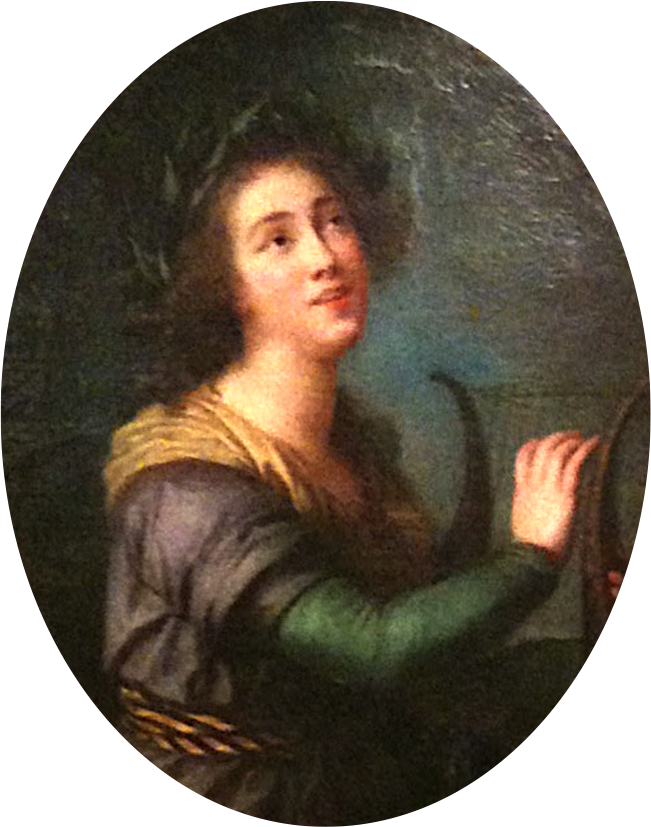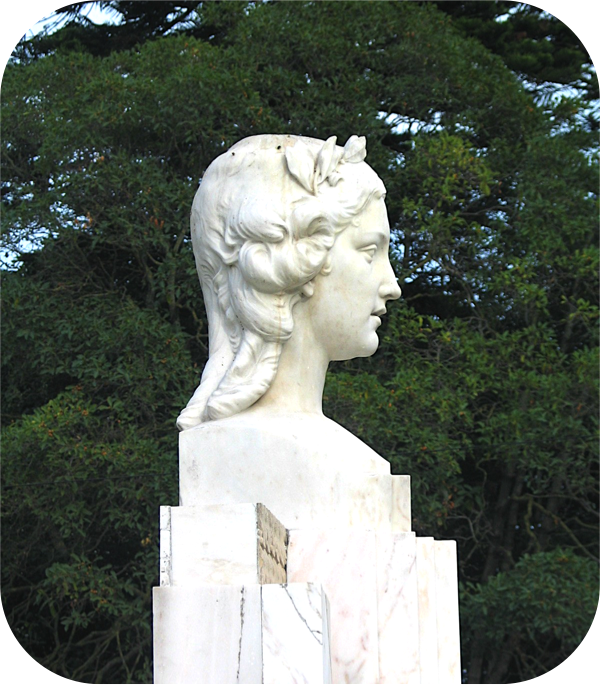|
comments
Luísa Rosa de Aguiar Todi (1753-1833)Portuguese Liric Singer. 
Luísa Joaquina de Aguiar Todi was born on the 9th of January of 1753, in Setúbal.
Having displayed, from an early age, a sharpened musical inclination – enhanced by her singing teacher, Francisco Peres, an Italian who also wrote for the theater – Todi made her stage debut at the age of 14, at the Bairro Alto Theatre, playing the role of Dorine in a Portuguese adaptation of Molière´s Tartuffe.
In addition to her elegant physical appearance, Todi had been gifted with an unusually versatile soprano voice, which she learned to modulate with complete mastery, in accordance with the effects that she strived to obtain, leading many to claim that she “sang with her soul”. She also learned to sing in multiple languages with the highest accuracy and expression, particularly in French, English, Italian and German.
After her debut at the Portuguese Royal Court, in 1771, Todi sang in Porto between 1772 and 1777, to which she followed with frequent and successful visits abroad, having initially performed in London, at the Royal Theatre, as well as in Paris and Turin. It was in this Italian city that she signed her first prestigious contract, as prima donna at the Teatro Regio (Royal Theatre), subsequently receiving high praise from critics, who considered her already, at the time, one of the finest voices the world had ever heard. Todi continued to garner success in Austria, Germany and Russia, where she was invited to perform at the Royal Court of Catherine II, in exchange for highly expensive jewelry. For three years, she lived in Prussia, by invitation of Frederick William II, where she was treated in equally majestic fashion. Among countless performances throughout the most diverse European cities, it is claimed that she was even heard by Beethoven, when singing in Mainz, Bonn.
In the following years, amidst brief returns to Portugal – in 1783 and 1793, to once again sing at the Royal Court – Todi distinguished herself in Paris, a city where she experienced a vibrant artistic dispute with Gertrud Elisabeth Mara, also a renowned female lyric singer during this era, and which triggered the most fervent reactions from critics and the audience. It was also in Paris that the famed artist Elisabete Luísa Vigée-Le Brun painted her portrait. In 1799, she effectively ended her lavish international career in Naples, Italy.
Upon her return to Portugal, she still performed in Porto, where she lived until 1811, at which time she ultimately returned to Lisbon, having begun, shortly after, to gradually lose her sight. It was precisely in Lisbon that she died, on the 1st of October of 1833.
In 2009, the musical group Os Músicos do Tejo released an album entitled The Arias of Luísa Todi, thus putting on record, for the first time, nine arias and two opera overtures that Todi magnified and helped to immortalize, on several occasions, with her magnificent voice.
***** Luísa Joaquina de Aguiar Todi nasceu a 9 de Janeiro de 1753, em Setúbal. Revelando desde cedo uma aguçada aptidão para a música – aprimorada pelo seu professor de canto Francisco Peres, um italiano que também compunha para teatro e que era mestre-de-capela de D. José I – Todi conseguiu a sua estreia em palco aos 14 anos de idade, no Teatro do Bairro Alto, ao interpretar o papel de Dorinda numa adaptação para português do Tartufo, de Molière. Para além da sua elegante aparência física, era detentora de uma voz de soprano invulgarmente versátil, que aprendeu a modular com total mestria, em função dos efeitos que pretendia obter, dizendo-se que “cantava com a alma”. Adicionalmente, aprendeu também a cantar em várias línguas com o maior rigor e expressão, designadamente em francês, inglês, italiano e alemão.
Após a sua estreia na corte, em 1771, Todi cantou no Porto entre 1772 e 1777, a que se seguiram deslocações assíduas e bem-sucedidas ao estrangeiro, tendo actuado, numa primeira fase, em Londres, no Teatro Real, em Paris e em Turim. Foi nesta cidade italiana, de resto, que veio a assinar o seu primeiro contrato de verdadeiro prestígio, enquanto prima-dona no Teatro Régio, e onde obteve rasgadíssimos elogios por parte da crítica, que já a considerava, à época, uma das melhores vozes de sempre. Continuou a granjear sucesso na Áustria, na Alemanha e na Rússia, onde foi convidada para actuar na corte de Catarina II, a troco de múltiplas jóias de elevado valor. Residiu durante três anos na Prússia, a convite de Frederico Guilherme II, onde foi igualmente tratada com assinalável majestosidade. Entre inúmeras actuações nas mais diversas cidades europeias, terá sido inclusivamente escutada por Beethoven, quando cantou em Mogúncia, Bona.
Nos anos seguintes, por entre fugazes regressos a Portugal, em 1783 e 1793, para cantar na corte lusitana, notabilizou-se em Paris, cidade onde viveu uma vibrante disputa artística com Gertrud Elisabeth Mara, outra célebre cantora lírica da época, e que impulsionou as mais fervorosas reacções por parte da crítica e do público. Foi também em Paris que a aclamada artista Elisabete Luísa Vigée-Le Brun pintou o seu retrato. Em 1799, pôs termo à sua grandiosa carreira internacional em Nápoles, Itália.
Aquando do seu regresso a Portugal, ainda chegou a actuar no Porto, onde viveu até 1811, altura em que regressou definitivamente a Lisboa, tendo começado, pouco tempo depois, a perder gradualmente a visão. Foi justamente em Lisboa que morreu, a 1 de Outubro de 1833.
Por ocasião das comemorações do centenário da sua morte, a 1 de Outubro de 1933, foi-lhe erigido um monumento no Largo José Afonso. O busto é da autoria de Leopoldo d'Almeida e o restante monumento idealizado pelo arquitecto Abel Pascoal. 
Glorieta a Luisa Todi em Setúbal.
Em 2009, o grupo musical Os Músicos do Tejo editou uma obra intitulada As Árias de Luísa Todi, assim registando em disco, pela primeira vez, nove árias e duas aberturas de óperas que Todi engrandeceu e ajudou a imortalizar, em variadas ocasiões, com a sua magnífica voz.
Pelo Edital municipal de 12/06/1917 o seu nome foi dado a uma rua de Lisboa, com a legenda "Insigne Cantora Portuguesa do Século XVIII". References: - Luísa Todi, wikipédia.
- Luísa Todi, Toponímia de lisboa.
- Luísa Todi, portal O Leme.
- CASTRO, Zília, ESTEVES, João (dir.), Dicionário no Feminino (séculos XIX-XX), Lisboa, Livros Horizonte, 2005.
- VILAR, Anita, Panorama de uma História Local no Feminino, Centro de Estudos Bocageanos, 2013.
|
|